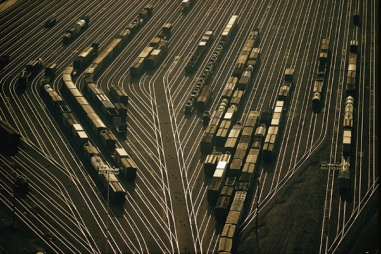Disclaimer: This essay is not intended as an effort to present a rigorous theory of consciousness. Rather, it is an effort to demonstrate how substance dualism is compatible with modern physics. To avoid appearing flippant, I have presented it in a straightforward, matter-of-fact manner.
For many centuries, physicists pondered whether light is the result of a wave function or if it is a particle like a tiny billiard ball. This eventually led to the famous double-slit experiment sometimes attributed to Thomas Young:
In the basic version of this experiment, a coherent light source such as a laser beam illuminates a plate pierced by two parallel slits, and the light passing through the slits is observed on a screen behind the plate. The wave nature of light causes the light waves passing through the two slits to interfere, producing bright and dark bands on the screen—a result that would not be expected if light consisted of classical particles. However, the light is always found to be absorbed at the screen at discrete points, as individual particles (not waves), the interference pattern appearing via the varying density of these particle hits on the screen. Furthermore, versions of the experiment that include detectors at the slits find that each detected photon passes through one slit (as would a classical particle), but not through both slits (as would a wave). These results demonstrate the principle of wave–particle duality. (Wikipedia, Double-slit experiment)
As this paragraph explains, the results indicate that light exhibits properties of both waves and particles.
Another even more curious property that is revealed by this experiment is the apparent influence of observation on the behavior of the wave/particle. If a detector is placed at either of the slits so that it is possible to determine which slit a particle of light passes through, the diffraction pattern indicating that it is a wave disappears. In other words, if it is possible to demonstrate that what is being observed is a particle, the light no longer behaves like a wave. This phenomenon is sometimes referred to as “wavefunction collapse”.
The explanation of this behavior offered by physicist Hugh Everett was that the light always passes through both slits. However, when it is possible to know which slit it passes through our universe splits into several branches. We branch into a universe where it passes only through a single slit. This explanation leads to the “many worlds” interpretation of quantum mechanics:
The many-worlds interpretation is an interpretation of quantum mechanics that asserts the objective reality of the universal wavefunction and denies the actuality of wavefunction collapse. Many-worlds implies that all possible alternative histories and futures are real, each representing an actual “world” (or “universe”). In lay terms, the hypothesis states there is a very large—perhaps infinite—number of universes, and everything that could possibly have happened in our past, but did not, has occurred in the past of some other universe or universes. (Wikipedia, Many-worlds interpretation)
In the many worlds interpretation, every variant of the experiment takes place. However, we are only able to experience one of these worlds, so we think the particle passes through just one slit.
However, this interpretation leads to a conundrum. Exactly what is it that continues on to one or the other of the worlds? If both universes exist and are equally valid, why do we experience just one of them?
The explanation for this conundrum is obvious. What passes into one of the many resultant universes is our consciousness. This explanation not only explains the experience of many worlds. It also explains properties of consciousness.
For centuries, philosophers have pondered how it is possible for something like consciousness, that is unified and semantic in nature, to be supported by the machinery of our universe that seems to be disjoint, mechanical and syntactic. A solution offered by Renée Descartes was that consciousness is made of a different substance than the rest of the universe. However, if this is the case, how is it able to interact with the mechanical universe?
The solution I propose is that the substance does not interact with the mechanical universe. It moves along it like a train moves along a track. In fact, the only thing in the universe that actually moves is consciousness. When consciousness encounters a quantum event, it chooses from one of many tracks like a train moving through a switching yard:
The appearance of motion in the universe is actually an illusion created by the motion of consciousness through it. This is similar to the illusion created when we look out of the window of a moving train. The world outside seems to be moving by when, in actuality, what is moving is the train. Consciousness passes through all the twists and curls of what has come to be called the quantum foam. As it does this, it experiences the changes that we refer to as physics.
If consciousness has no influence on the universe, how is it able to express itself through the human brain? The answer is that it does not. What it actually does is chose from moment to moment which of many possible brains it will occupy:
The reason why we are apparently able to recognize that we have consciousness and express that we have consciousness is that we chose brains that are configured in a way that represents the recognition and expression of this experience.
If each of us chooses from moment to moment which of many universes we will pass into, does this mean that we may find ourselves in a universe where everyone around us is actually a non-conscious zombie?
This does not seem like a reasonable idea, since the people around us also report the experience of consciousness and seem to exhibit the indicative behavior. What I propose is that everyone’s consciousness is tethered in some way so that they all have to choose the same universe. It even seems likely that we are all part of a single consciousness that is expressed through different brains. Possibly, every conscious being, from termites to high priests, is part of a single conscious substance.
An idea that has entered into philosophy since people first began to contemplate the human experience is that everyone’s “soul” is connected at some deeper level. It may turn out that this idea, previously accessed only through deep meditation, has a basis in the actual mechanics of the universe.
As for what the substance of consciousness actually is, this may always be a mystery. Possibly it is a kind of choice function as described in earlier entries. The assumption made by modern scientists is that consciousness is an artifact of physics, chemistry, or biology. It appears more likely, if the preceding theory is correct, that the universe is actually a kind of playground created so that consciousness has a place and manner to express itself. If this is correct, our collective consciousness may be moving toward some ultimate objective. Perhaps the barriers between our separate expressions of consciousness will be removed and we will realize that we are all one mind. Perhaps the barriers of the universe will be removed or altered so that our consciousness can experience it in a different way. Perhaps the universe will merely unfold into a much more interesting playground.


Hi Spike . . . could you please provide me an email address so I can contact you?
I sent my contact information to your Gmail address. Did you get it?
Superposition is when the quantum state of all particles reside in one wave function. The Wave collapse (decoherence) would be the transition between states. So when you say that consciousness chooses a train track I think of it as more of a bucket of water where the drops merge into one big drop in a specific shape. The drop shape is the quality of the experience. Music has tone and intensity in space. The valence of the pressure waves is a density of those waves. So the drops separate and this creates a break in experience. This creates a frame rate. The normal frame rate in humans are alpha brain waves. The drops merge into a shape then separate. The choice function is really just deciding where to send the drops when the separate so that when they merge again they will be in a different position. The merger is when the train tracks in your example must converge otherwise the trains (I call them drops) would be separate forever and a frame rate would be impossible. The tracks must crisscross (converge / merge) or everything would disintegrate. Because the particles (drops) are separating just to set up the next frame, the tracks are not really there. They could be there but then they would need to be the tracks chosen to merge into the next mega drop configuration.